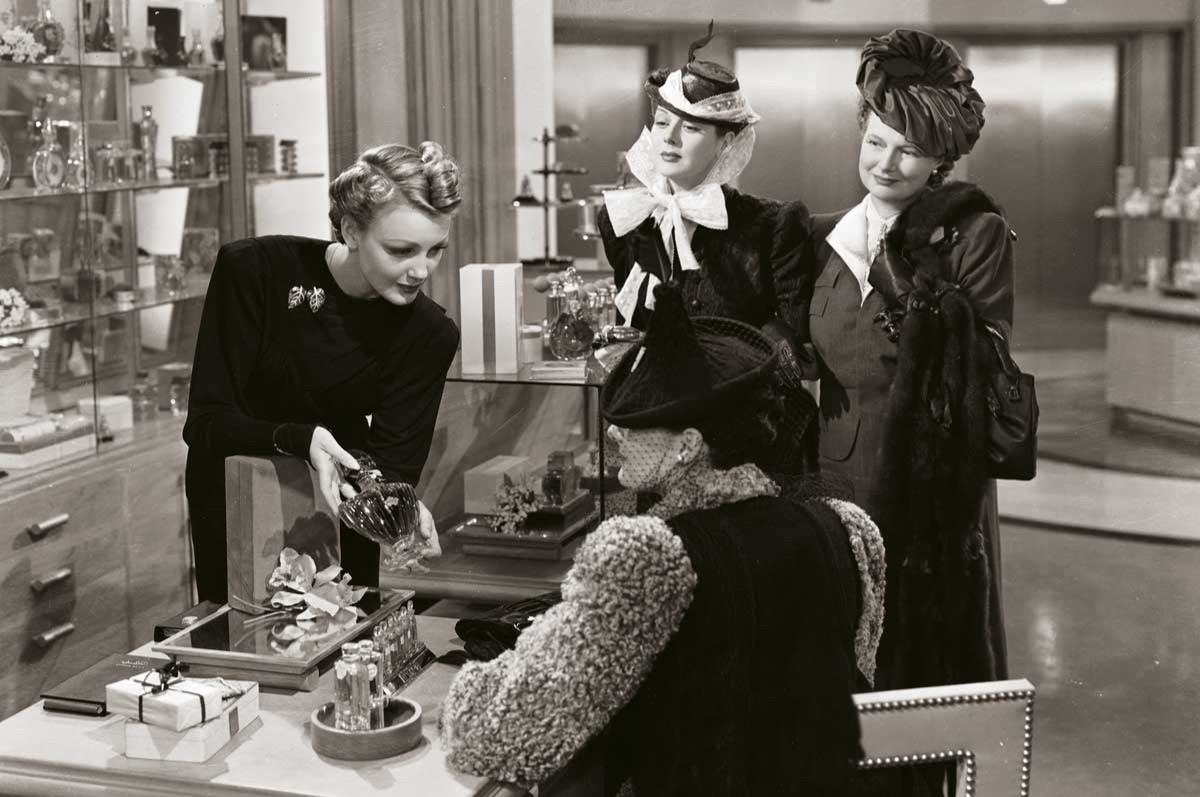
Perfume has enchanted humanity for thousands of years, weaving its way through ancient rituals, royal courts, and modern-day fashion. Did you know the earliest recorded use of perfume dates back to ancient civilizations like Egypt, Greece, and Rome? These cultures used scents in religious ceremonies, burial preparations, and daily life. Perfume was more than just a pleasant aroma; it was a status symbol, a form of currency, and even a way to mask unpleasant odors. From the first recorded perfumer, Tapputi, in Babylon to the lavish courts of Louis XV, the history of perfume is a rich tapestry of innovation, luxury, and cultural significance. Dive into these 35 intriguing facts to uncover the evolution and impact of perfume throughout history.
Ancient Origins of Perfume
Perfume has been a part of human culture for thousands of years. Its journey begins with ancient civilizations that used scents for various purposes.
-
The earliest recorded use of perfume dates back to ancient civilizations, where incense was burned to produce pleasant aromas. The Egyptians, Greeks, and Romans all utilized scents in religious ceremonies, burial preparations, and daily wear.
-
The Egyptians are credited with the origin of perfume. They used scents in everything from religious ceremonies to burial preparations and even daily wear. The rich elites adorned themselves with aromas like lily to denote their status.
-
In ancient Egypt, perfume was a status symbol. The wealthy used scents to signify their social standing, while the common folk could only afford simpler fragrances.
-
Ancient Egyptian temples contained perfume recipes. These recipes often included incense and myrrh, which were traded extensively with the Middle East, India, and Arabia.
-
In the 2nd millennium BC, a perfumer named Tapputi from Babylon was recorded. She distilled flowers, oil, and other aromatic compounds, filtered them, and placed them back into stills multiple times.
Greek and Roman Contributions
The Greeks and Romans played a significant role in the evolution of perfumery, introducing new techniques and uses for scents.
-
The Greeks and Romans also used perfume extensively. They created blown glass containers for perfume storage and recorded various uses of scents, including rose-scented water to hide bad smells in public areas.
-
The fall of the Roman Empire in 5 AD led to a decline in perfumery skills. However, the craft was preserved through trade with the East, allowing it to survive during the Dark Ages.
Middle Ages and Renaissance
The Middle Ages saw a decline in perfume use due to religious beliefs, but the Renaissance brought a revival and significant advancements in perfumery.
-
During the Middle Ages, the use of perfume declined significantly due to the rise of Christianity. The Church discouraged the use of perfumes, viewing them as worldly and sinful.
-
Despite the decline, medieval Europe saw a revival in perfumery. Monasteries became centers for perfume production, using herbs and spices to create fragrances.
-
The Renaissance marked a significant turning point in perfumery. Chemists developed new distillation processes, creating more recognizable contemporary notes like cardamom and vanilla.
Perfume in the French Court
The French court, especially during the reign of Louis XV, became a hub for perfume innovation and extravagance.
-
The Versailles Court became the epicenter of the perfume industry during the 17th century. The levels of fragrance use were described as "intoxicating," and manufacturers developed their trade using novel floral ingredients like carnation, lavender, rose, and jasmine.
-
The court of Louis XV was known as the "perfumed court". It was mandatory for him to never wear the same fragrance twice, showcasing the extravagance and luxury associated with perfumes during this period.
Napoleonic Influence
Napoleon Bonaparte and his wife Josephine had a significant impact on the perfume industry, reviving its popularity in France.
-
The French Revolution left France smelling of gunpowder, but perfume made a comeback with the emergence of the French Empire. Napoleon Bonaparte was known for his exorbitant expenditures on perfume, using two quarts of violet cologne each week and sixty bottles of jasmine extract monthly.
-
Josephine, Napoleon's wife, had a strong preference for musk. She used so much that sixty years after her death, the scent still lingered in her boudoir.
Innovations in Perfumery
The development of new techniques and ingredients has continually shaped the perfume industry.
-
The first alcohol-formed fragrance was created in 1371 by a priest for Queen Elisabeth of Hungary. This fragrance was rumored to keep the queen looking young throughout her lifetime.
-
The creation of lighter "cologne water" made fragrances more accessible to all classes. This innovation allowed perfumes to transcend their elitist origins and become a staple in everyday life.
-
The last Queen of France, Marie Antoinette, was famous for her love of flowers. Her favorite fragrance was a 100% natural scent made of notes of rose, orange blossom, and jasmine. Flower petals were crushed to release their natural essential oils before herbs were added to the oil for a unique scent.
-
The first glass perfume bottle was created in 1765 by the Baccarat glass factory in France. This innovation marked a significant step in the development of modern perfumery, allowing for more elegant and durable storage of fragrances.
-
During the 19th century, chemists discovered new distillation processes and different complex molecules to create new scents for men and women. This period saw the biggest development in contemporary fragrances, with older processes involving the crushing of 300,000 rose petals to make a kilogram of rose perfume.
Understanding Perfume Notes
Perfume notes are essential in creating complex and appealing fragrances.
-
The focus on differing notes included in a scent began as a way to choose specific scents to add to a perfume. The top note gives the first impression, followed by the heart and base notes. For example, the Calvin Klein fragrance Eternity features zesty mandarin and lemon as top notes, orange blossom and juniper berries as heart notes, and musk and amber as base notes.
-
Making your own perfume can be a scientific endeavor. It involves understanding the top notes, middle notes, and base notes that comprise a perfume. You'll need an accurate scale to measure ingredients and specific formulas, making it a unique DIY beauty trick.
Perfume in Ancient China
Ancient China also has a rich history of perfumery, with unique blends and uses.
-
Perfumery in ancient China dates back to the Han Dynasty (206 BC – 220 AD). Chinese perfumes were known for their complex blends of herbs, spices, and flowers, often used in rituals and ceremonies.
-
In some ancient cultures, perfume was used as currency. Its value was so high that it could be traded for other goods and services, reflecting its rarity and desirability.
Animal-Derived Ingredients
Historically, perfumes often included unique ingredients derived from animals.
-
Napoleon Bonaparte was known for his love of colognes. He influenced French perfumery significantly, leading to the development of new fragrances and the rise of the French perfume industry.
-
Historically, perfumes often included animal-derived ingredients like musk and ambergris. These substances were prized for their unique scents and were used extensively in perfumery.
Exotic Botanicals
Rare and exotic botanicals have always been a part of perfumery, adding unique aromas to fragrances.
-
Perfumes have also used rare and exotic botanicals to create distinctive scents. These plant extracts often come from remote regions and are highly valued for their unique aromas.
-
Perfumes were used in various ways across ancient civilizations. In Egypt, they were used in mummification; in Greece, they were used in religious rituals; and in Mesopotamia, they were used in ceremonies and daily life.
Modern Perfumery
Modern perfumery blends traditional techniques with advanced technology to create complex fragrances.
-
Modern perfumes involve a significant amount of chemistry, especially those produced synthetically. Perfume chemists use complex molecules to create new scents, making their role crucial in the development of modern fragrances.
-
True perfume is a highly concentrated mixture of scent. The next step down from perfume is Esprit de Parfum, which contains up to 30% aromatics. Eau de Toilette has a concentration of no more than 15%.
-
Perfumes are categorized into various fragrance families, including floral, chypre (scents like bergamot), oceanic, citrus, fruit, and gourmand (scents like vanilla and honey). Each family has its unique characteristics and is defined by the concentration and dominance of its contained scent notes.
Perfumed Textiles and Archaeological Discoveries
Perfumed textiles and archaeological discoveries provide insights into ancient perfumery practices.
-
In historical times, scents played a major role in daily life. Perfumed textiles were used to keep clothes and rooms smelling fragrant. This practice was common in ancient Egypt and continued through the Middle Ages.
-
Archaeologists have uncovered a perfume factory from 2,000 BC in Cyprus, which specialized in the production of scents like coriander, laurel, myrtle, lavender, and rosemary. These discoveries provide valuable insights into ancient perfumery practices.
Perfume and Memory
Perfume has a unique ability to evoke memories and emotions, making it a powerful sensory experience.
-
Modern-day perfumery involves a blend of traditional techniques and advanced technology. Perfume manufacturers use sophisticated equipment and scientific methods to create complex fragrances that appeal to a wide range of consumers.
-
Smell has the power to evoke memories and transport us to specific times or places in our lives. Perfumes often hold special meanings and are reserved for particular occasions or personal use.
-
While the perfume industry is currently in a somewhat "unoriginal" phase, trends are constantly changing, and new innovations are just around the corner. The future of perfumery promises exciting developments, including the potential for synthetic fragrances and new raw materials.
Perfume's Timeless Journey
Perfume has woven itself into the fabric of human history, from ancient Egypt to modern times. Its evolution reflects societal changes, technological advancements, and cultural shifts. Ancient civilizations like the Egyptians, Greeks, and Romans used scents for religious ceremonies, daily wear, and even as status symbols. The Middle Ages saw a decline due to Christianity, but the Renaissance revived the art with new distillation techniques. The 17th century's Versailles Court and figures like Napoleon Bonaparte further popularized perfume, making it a symbol of luxury and elegance. Modern perfumery blends traditional methods with advanced technology, creating complex fragrances that evoke memories and emotions. As we look to the future, the perfume industry promises exciting innovations, ensuring that this timeless art form continues to captivate and inspire. Perfume's rich history is a testament to its enduring allure and significance in human culture.
Was this page helpful?
Our commitment to delivering trustworthy and engaging content is at the heart of what we do. Each fact on our site is contributed by real users like you, bringing a wealth of diverse insights and information. To ensure the highest standards of accuracy and reliability, our dedicated editors meticulously review each submission. This process guarantees that the facts we share are not only fascinating but also credible. Trust in our commitment to quality and authenticity as you explore and learn with us.


